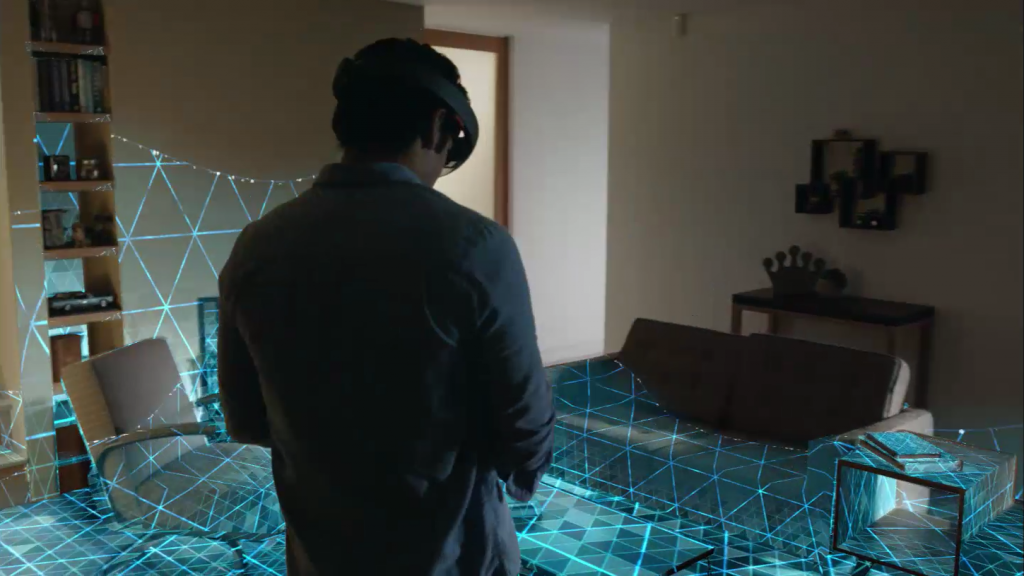In a previous blog post I talked about my attempt to rebuild the HoloLens scanning effect as shown in this video. After following the HoloLens Academy tutorials I decided to see how easy my existing shader could be integrated in Unity. It turned out that only a minimal amount of plumbing was needed.
I took the project files from the HoloLens course on spatial mapping (Holograms 230). That course explains how you can apply your own material and a custom shader to the mesh that is generated by the spatial mapper. For quick iterations you can even load a previously saved room mesh. I added a new unlit shader and a material using it. This material is used by the Spatial Mapping Manager script to apply to the mesh coming from the spatial mapper.
Unity shader variables
Most of the plumbing came down to defining variables and using them in the shader. The main animation is driven by the global time. Unity provides this as a built-in variable vector _Time, where the y-component contains the elapsed time in seconds. I added a few variables to control the looks and behavior of the effect like Main Color, Speed, Triangles Scale and Range Scale.
The center of the effect is also a variable that can be configured. It could be updated by using doing a Raycast intersection as explained in the HoloLens Academy tutorials. Currently the effect keeps pulsating every 5 seconds. To only trigger the effect on an event the used global time could be replaced by a separately controlled progress variable.
Differences with original effect
To create the effect of triangles walking across the floor and up the walls the shader needs to calculate uv coordinates based on a world location. Preferably with as little seams as possible. I used the horizontal distance to the configured center point and added the vertical distance instead of using the direct distance to the center point. This works reasonably well on connected surfaces, but note that it is not a real walk across the topology of the mesh.
The effect in the original video has a slightly different border effect that has some more distortions and a different color. I experimented with mimicking that effect, but decided to leave that out. I used the effect in an interactive installation where I preferred a stronger border that looked like a wave was expanding outwards.
The source code of the project is available on Github.


Leave a Reply
You must be logged in to post a comment.